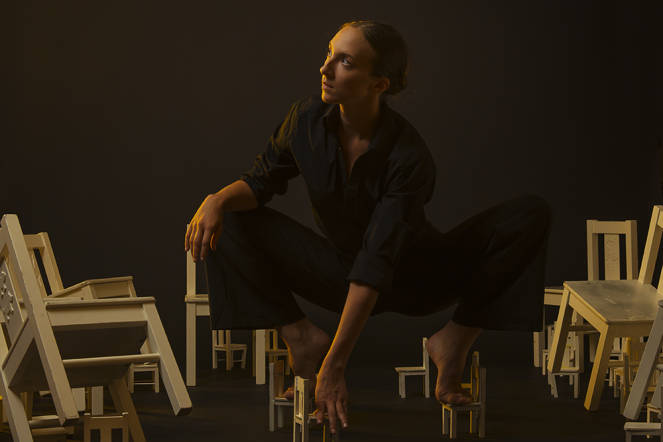Working with Ludwig van Beethoven’s music had been a desire of Hélène Blackburn’s for some time before she developed the piece 9 based on the composer’s most recognizable work, his ninth symphony, in 2016. The Artistic Director of Canadian dance company Cas Public was inspired to finally take on Beethoven following company dancer Cai Glover’s confession that he “is hard of hearing and, without his hearing aid, he is deaf.”
Born of this discovery came a fortuitous pairing, as Glover takes center stage – for as much as one can in an ensemble piece – in a production built on a score created by a composer who suffered from progressive hearing loss and who, by most accounts, was already completely deaf when he wrote his ninth symphony. In the resulting piece, Blackburn explores both “the uniqueness of the small defects hidden behind the apparent perfection” of her dancer’s bodies and how said defects monumentally affect one’s perception of the world.
After touring Canada, Europe and the United States for three years, 9 made its Scottish debut at the Edinburgh International Festival between August 3 – 6, 2019. Cas Public also led a dance workshop for families as part of the festival’s Learning and Engagement initiative. In what appears to be a special collaboration with workshop participants, four children were invited to participate in the Edinburgh performances.

Blackburn’s choreography is athletic and rapid, relying on whip-like movements and reflexes. It is contemporary in nature, but heavily influenced by ballet, in fact, one of the work’s most striking moments is when one of the female dancers stands tiptoe in front of a male dancer who aggressively belts her limbs into perfectly pointed extensions and hard, angular edges.
The dancing is relentless and the dancers tireless, often dancing in unison but weaving in and out of each other’s company, shifting continuously from quintets, to quartets to trios to duets. The use of sparse lighting guides the eye to exactly where the choreographer wants it, and the clever use of spotlights that constantly appear and disappear, pull the eye’s focus from one dancer to the next.
It can all get just a little bit too hectic at times and the mind can drift, because although the movements are crisp and energizing and the dancers’ rhythm and timing incredibly spot on, it still becomes a sort of cacophonous blur.
The dancers are without a doubt 9’s strongest asset. They are so technically phenomenal that it is difficult not to be in awe of them. However, there were two rather large hindrances to their work. The first is a brightly lit and coloured video that plays scenes of a deaf boy’s interactions with other children after he removes his cochlear device. As these play out, the dancers, clad entirely in black against a black stage, continue to dance. You’re not sure where to look. The video depicts vignettes about how different children experience the same situation differently, which ultimately adds nothing to the piece that we don’t already know. It seems a strange, ill-fitted and unnecessary addendum to what is already established in program notes and when Cai Glover removes his hearing device for all of the audience to see at the beginning of the performance.
The addition of the four workshop children to the show was another mismatch that detracted energy and fluidity from the performance. While one of the children was quite expressive, most of the kids just looked confused about what the dancers were asking them to do. Their appearance felt like a glommed on pat on the back for involving kids in dance, which although laudable, wasn’t appropriate to the production.


